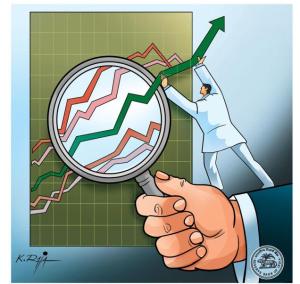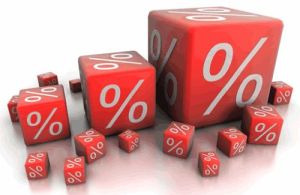Reserve Bank of India (RBI) reduced the repo rate by 50 basis points to 8.0 per cent in its annual monetary policy review on April 17, 2012. While the markets were expecting a moderate 25 basis point cut to be in place, a sharp 50 basis point cut surprised many. Reserve Bank does seem to have its own logic for this rate cut but it seems like a step which is too fast and too furious. Is it a gamble for growth that RBI is willing to play or are they succumbing to demand and pressure from industry for some easing in policy rates?
Rate cut from RBI comes on the back of declining growth rate to sub 7% which apparently is below the desired/expected growth rate which RBI has targeted. While the growth rate has been impacted due to continuous rate hikes by RBI in the past 2 years, there has been moderate impact on inflation. Headline inflation still hovers at around 7%, however there has been moderation from last year’s rate which has prompted RBI to take this cautious step of rate cut.
Although inflation levels are yet far off from RBI’s comfortable target of 4-4.5%, but declining growth rate has prompted RBI to shift its focus on growth over inflation for the time being. This is a risky approach.
Firstly, risks to inflation spiraling high again are looming at large. The reasons remain the same which have till now not let the monetary measures by RBI control inflation. Large fiscal deficit which has been further fuelled by focus of government on spending and giving benefits and subsidies has led to increase in demand which further triggers inflation. Further, inflation is driven by supply side factors primarily in the food category. Sturdy supply chain measures are yet to be taken by the government to counter these challenges. Further the decline in investment activities has more to do with weak fiscal policies than high interest rates. Policy-related bottlenecks, higher cost of inputs, weak rupee and slowing external demand has all led to decline in investment activities. Foreign investments also have seen to take a dwindling in wake of weak confidence in Indian Economy in the backdrop of slow growth, non-industry friendly policies, political uncertainties and row of scams. Amidst all these, there is also pressure of fuel prices to rise in the global markets. Even if the prices remain steady, government has but little choice to increase retail fuel prices given the already burdened subsidy budget.
 While the RBI has said it has taken a cautionary approach and intends to closely monitor inflation and growth rates and if needed might even go for rate hike, but it is moving into dangerous grounds. Growth does certainly seems to be a significant factor on RBI’s mind when playing the repo rate cut card but for it to be significantly effective, Banks need to pass on the rate cut to corporate so that investments can be boosted. Apparently the banks are reluctant to do so. Given the slow deposit growth, banks are hesitant to drop the deposit rates as it may further slow down deposits and so if the lending rates are cut it will hit the profitability of Banks. The banks will ultimately pass on the rate cut but it will be crucial to see who wins in the race – inflation or growth. We all hope that the measure turns out beneficial and gets Indian Economy back on track of solid growth.
While the RBI has said it has taken a cautionary approach and intends to closely monitor inflation and growth rates and if needed might even go for rate hike, but it is moving into dangerous grounds. Growth does certainly seems to be a significant factor on RBI’s mind when playing the repo rate cut card but for it to be significantly effective, Banks need to pass on the rate cut to corporate so that investments can be boosted. Apparently the banks are reluctant to do so. Given the slow deposit growth, banks are hesitant to drop the deposit rates as it may further slow down deposits and so if the lending rates are cut it will hit the profitability of Banks. The banks will ultimately pass on the rate cut but it will be crucial to see who wins in the race – inflation or growth. We all hope that the measure turns out beneficial and gets Indian Economy back on track of solid growth.









nicely captured various issues around inflation and growth. I guess its high time for policy makers to look at various other subsidies, freebies given away by political parties to woo voters and win next municipal or assembly elections, by elections etc On top of that enormous amount of wastage of food grain, milk and other perishable goods should simply be made a criminal offense. I guess soaring real estate and gold too has contributed to slow deposit growth. If I can the real estate sector of India, surprisingly all the organized, listed companies operating in this segment are witnessing a decline in profit but the unorganized, local, mafia driven companies and their owners are raking in millions overnight !
Real Estate and Gold prices are adding to the woos, though surprisingly the listed, large real estate firms are bleeding, the small, mafia driven real estate firms are raking millions ! In addition to Oil subsidy, we must closely examine other subsidies, freebies distributed at whims and fancies of the political parties, before/after elections at the cost of tax-payers money !
@nittinj – I agree with you on many points. Needing government to step up and close the loopholes from where inflation is spiraling is a must. Strengthening food supply chain to reduce wastage and minimizing subsidies will go a long way in solving problems. While effective supply chain would require focused efforts on part of government, subsidies has always been a sensitive topic for this government.